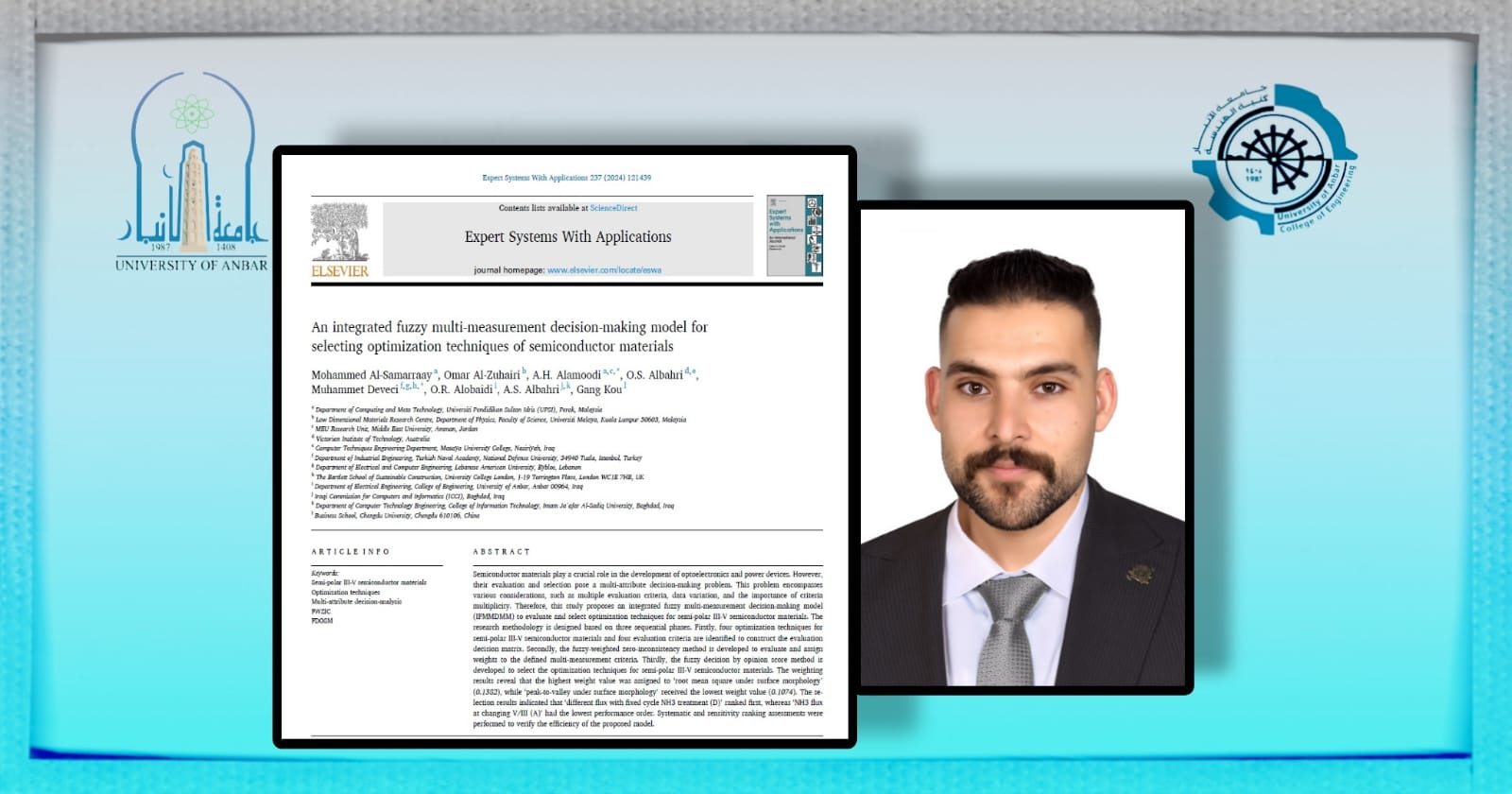
Researcher from the College of Engineering - Anbar University publishes scientific research in a journal classified within the Clarivate and Scopus databases
, enabling Omar Raed Zaki, a lecturer in the College of Engineering - Department of Electrical Engineering, with researchers from different universities, published a scientific research in a prestigious international magazine, which is the magazine “Expert Systems with Applications”, as this magazine is one of the magazines of the international publishing house Elsevier and is classified within the journals of Nature & Science. And within the first quarter (Q1) within the scope of Scopus and Clarivate, it has an impact factor of 8.5 and a Cite Score of 12.6. Research title: An integrated fuzzy multi-measurement decision-making model for selecting optimization techniques of semiconductor materials. In this research, it was done. The evaluation and selection of IFMMDMM taking into account all available evaluation criteria using MADM methods is presented in this study. The methodology was developed based on three main stages. The first stage was the evaluation decision matrix, which was used to select four optimization techniques as the most commonly used alternatives as well as selecting multiple measurement evaluation criteria, including crystal quality, surface morphology, stress/strain, and time. The second stage involved formulating the FWZIC method, where a weighting process had to be performed for all pre-defined evaluation criteria. The final stage was used to formulate FDOSM, where the selection process for all optimization techniques was presented. The IFMMDMM results obtained using the FWZIC and FDOSM methods were evaluated, demonstrating that the selected optimization techniques underwent a systematic classification. Furthermore, the effect of changing the weights of the criteria was determined using sensitivity analysis. It is important to highlight that the evaluation and selection of these alternatives to optimization techniques for III-V semipolar semiconductor materials can show an impactful decision in obtaining suitable qualities for the growth of semipolar GaN epitaxial layers (11–22). In addition, it is safe to assume that based on these proposed multiple measurement parameters, higher quality molds can be further used in the growth and fabrication of optoelectronic devices for various applications. These devices can be further applied to lighting, advanced communications, ozone sensing, air purification, and flame detection. Hence, this study demonstrates the importance of the proposed IFMMDMM for researchers and industries focusing on subpolar gallium nitride dies.


